Visions of Jean-Pierre
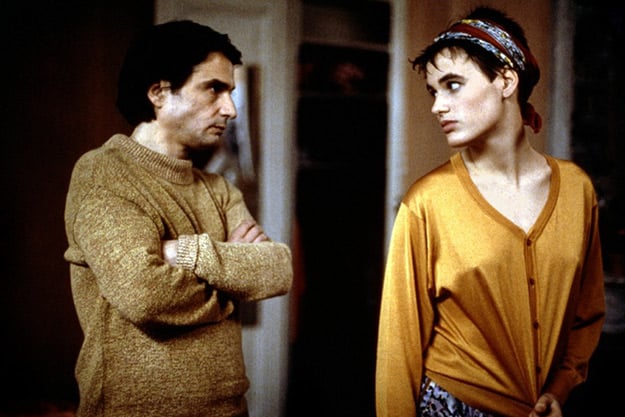
Paris Awakens
Last night I was looking at the photos that Isabelle Weingarten took on the set of Paris Awakens (1991) five years ago, and I was struck by Jean-Pierre Léaud’s expression in every picture in which he appears. Not only can one palpably perceive his tension, but also his mouth is clenched as though he were perpetually bracing himself for the worst.
I wish I could recall it more clearly. In a Saint-Denis studio, we had constructed the old decrepit apartment that was central to the film. The set, which we had miraculously obtained at a discount—a sitcom’s production had been delayed after Jean Lefebvre dropped out—was found in one of those rough neighborhoods on the outskirts of the city where film and television production facilities have been established at low cost: those rows of warehouses where you’ll see, on one end, the parked Mercedes of executives and, on the other end, agitated groups of extras meant to represent “the masses” in some production, being herded by assistants visibly fearful of being demoted to similarly demeaning tasks, and who cling to their walkie-talkies as if they were the only point of contact linking them to the real world, a world belonging to a different kind of humanity. I had never liked these filmmaking sites that resembled industrial settlements of the previous century, always sad, pervaded by the hardness of a forced-labor camp; and I like even less what they became under television’s reign, in which cinema is now merely tolerated, a vague subsistence whose diffuse prestige seems to be dissociated from curiosity or desire, not for art’s sake but for the sake of archaic practices, the perplexing survival of customs carried over from a past whose fascination is commensurate with its definitive remoteness.
So I would arrive, park, and go directly to the film set and into the peculiarly constructed apartment, where instead of merely reassembling the portions that would be useful in the film shoot, we had conceived of a whole structure, with a backyard on one side and a trompe l’oeil vista on the other; and instead of leaving the ceilings open—which is typically done to facilitate catwalk lighting—we chose to install a ceiling, in order to wholly reproduce the conditions of a location shoot.
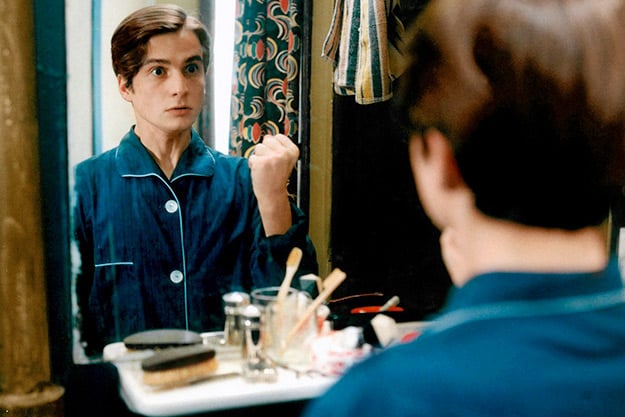
Stolen Kisses
So I would take up my position in this setting—at once stifling and sheltering—very early, long before the crew would arrive. And, soaking up its mood, its atmosphere, I tried to define, day by day, shot after shot, scene after scene, the film as it revealed itself, through me.
It was here that we shot the bulk of the sequences featuring Jean-Pierre Léaud. We had been introduced by Serge Toubiana at some point, and ultimately this film was perhaps a distant echo of that meeting. It was the period following my first film, Disorder (1986), and Jean-Pierre, who had loved that film, wanted to offer to produce the next one, which would become Winter’s Child (1989), and whose outline I was beginning to dream up. It was too early to contemplate anything serious, but I remember very clearly my first impressions, which have not changed with time.
I never see the actor or the actress, but the person. Not what cinema shows us of a person, but rather what it doesn’t show, either because cinema doesn’t want to see it, or because it can’t see it, or else because this aspect belongs to that core of inalienable privacy, of unfathomable mystery, the infinite world that each of us contains, of which our words, our actions, or our expressions are merely a bit of froth on the surface.
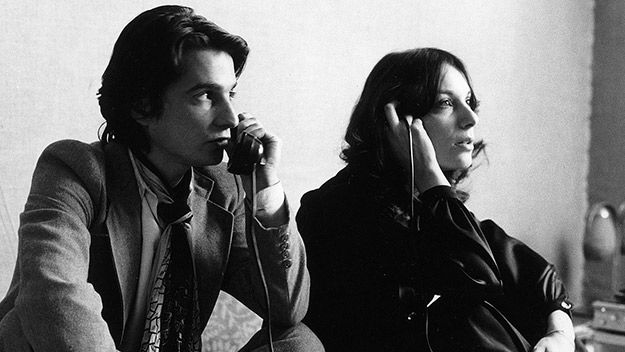
The Mother and the Whore
In The Mother and the Whore (1973), among the most personally significant films to me, Jean-Pierre acted in one of the most beautiful roles in the history of French cinema; and yet it’s Jean-Pierre the person whom I remember, whom I have loved, and who was not what I had expected.
Would he be surprised to hear me say that? It was his strength that surprised me, the compact density of strength that resided in him and that manifested itself as repressed power. What one might call poetic intensity—the intensity of an inner fire, or of a violence painstakingly harnessed at the cost of turning it back against oneself in the form of self-destructiveness—was a palpable presence in Jean-Pierre, like a supernatural gift, or rather a superhuman one: intolerable, unbearable, because of the pain of simply bearing it. And if you feel yourself being consumed by it, you will also have the very physical impression that you might be burned on contact.
Nothing in the current state of cinema seems to measure up to Jean-Pierre Léaud, for he evokes, instead, the prospect of a cinema that would only have been possible, and that only remains possible, because he is there to embody it, and because he is waiting for it. I have always been reticent when I observe the levity with which others talk about cinema’s inspired visionaries; Jean-Pierre believes, as I do, in invisible presences, and I have always been fascinated by the evidence suggesting that he is one of them, one of those artists made to act as intermediaries between the spiritual world and the material world, between the cinema in practice and the cinema in its capacity to transcend itself, to enlarge itself, to raise itself up toward its essence. And cinema’s essence is the thing that Jean-Pierre has in his custody, the thing that he keeps and protects like a secret that someone has confided in him, and against whose importance he measures all of his words and actions. And against whose importance you, too, measure all your words and actions in his presence, through him. The effect is still more intense on a film set, where Jean-Pierre carries with him the whole of his incandescence.
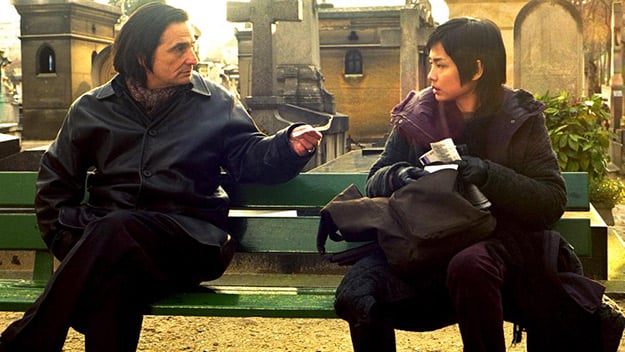
What Time Is It There?
Since our first meeting, I have long pondered what it would be like to collaborate with him. Jean-Pierre is at once an actor and an aura: his personal magnetism can only superficially adapt itself to, and superimpose itself upon, what is merely a character.
Soon, I intuited that if I wanted to work with Jean-Pierre I would first have to write for him, and yet in writing for him I didn’t need to concern myself with crafting a tailor-made role. I needed to write a self-sufficient character, one who would have his own life and, insofar as the character was to be distinct from Jean-Pierre, the space separating the two would be inhabited, nourished by his infinite resources of humanity and—to use a word that I don’t much like, as it is used indiscriminately, and often very foolishly, in speaking about cinema as though it were an end in itself—emotion.
The apartment came alive when Jean-Pierre entered it. I can still feel the tension and recall the silence that would settle in. For if Jean-Pierre needed to concentrate, he would require concentration from those around him as well. And the first test of both the quality of Jean-Pierre’s involvement and the investment of those around him—which was primarily defined by their receptiveness to his own—hinged on the presence of that electricity.
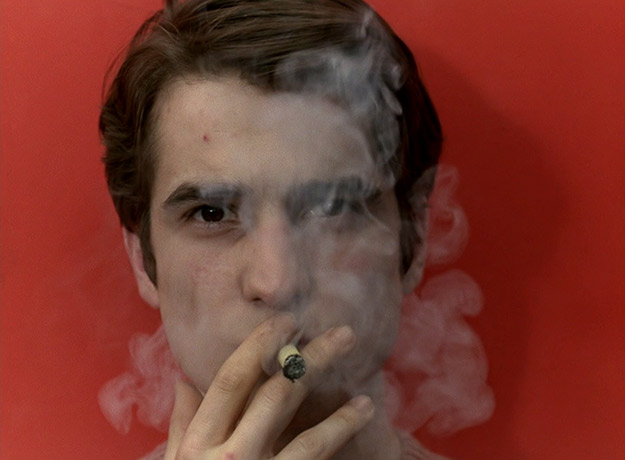
La Chinoise
There were a lot of people on this shoot: the usual film production crew, as well as those enlisted as soon as work begins in the studio (painters, set builders, etc.). The respect that Jean-Pierre garnered, and the very charged, very strained silence that was accorded to him, were tied to the general sense that he knew how to spread around the danger involved in acting. He understands the magical nature of this transaction, where the performer puts himself wholly on the line: confronted with the possibility that a fleeting instant might be capable of stopping time, he will place his whole being into this paralysis, facing the infinite abyss of reality opening out before him each time the camera rolls, each time it emits its purr, a signal that invisible doors are opening.
I think it’s this vertigo that haunts Jean-Pierre, this fine-tuned consciousness of metaphysical space at the instant where perhaps not only does the future appear to him, but also, during this elliptical moment, he is accessing the whole world of his own past; the threads come together, he rediscovers the span of his own life, just as within himself the span of eternity transforms him into a single history, his history, which is the history of cinema, which he knows to be his rightful place, the finest actor of his time, not so much in the field of cinema as in the family of cinema, or, more generally, in the world today, which hardly knows how to recognize him, and which is frightened of him. This fear, in the end, is the greatest tribute the world can pay him.
A Jean-Pierre Léaud retrospective runs at the Film Society of Lincoln Center from March 29 to April 6. This article was written in 1996, upon the French release of Irma Vep, for the Strasbourg review Limelight and also appeared in the book Présences, published by Gallimard. It was translated by Madeline Whittle. To read our exclusive interview with Léaud on the occasion of The Death of Louis XIV, opening March 31, see this article in our March/April issue.
Olivier Assayas is the director of such films as Irma Vep (1996), Summer Hours (2008), Carlos (2010), Clouds of Sils Maria (2014), and Personal Shopper (2017).







